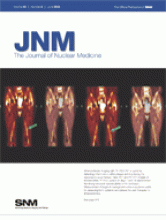REPLY: We appreciate our colleagues' observations about corrections for the partial-volume effect (PVE) in PET. They have brought up an important and timely issue—whether PET/CT manufacturers could offer PVE corrections as part of their clinical software. We agree that even if no perfectly accurate PVE correction has been designed so far, many possibilities do exist to reduce the bias introduced by PVE without substantially increasing variability (1). As mentioned in our review paper, by showing the anatomic support of functional abnormalities, fused PET/CT images (and soon PET/MR images) make it possible to implement simple PVE corrections, such as those based on recovery coefficients (2,3). Simpler corrections that do not even require any assumption regarding the contours of the functional abnormalities (4) are also available. Even if such corrections remain approximate, having them available could provide the user with an extremely valuable tool to assess the reliability of the SUV estimates, permitting computation of the SUV both with and without PVE correction, similar to showing both attenuation-corrected and non–attenuation-corrected images.
Having both the corrected and uncorrected SUV indices available to the physicians would seem to be a great step forward toward a sounder quantitative interpretation of the images. This is true even if the corrections might be only approximate. As mentioned in the letter of Drs. Basu and Alavi, this is especially true in the context of patient monitoring, an area in which changes in SUV estimates have to be interpreted as either real physiologic changes or simply the result of a change in the PVE (e.g., due to changes in tumor size). The crucial role that PET/CT is likely to play in patient monitoring should provide strong motivation to address the challenging issue of providing PVE-corrected indices (or still better, PVE-corrected images) and, ultimately, even to provide corrections for motion-induced PVEs.
Footnotes
-
COPYRIGHT © 2008 by the Society of Nuclear Medicine, Inc.







